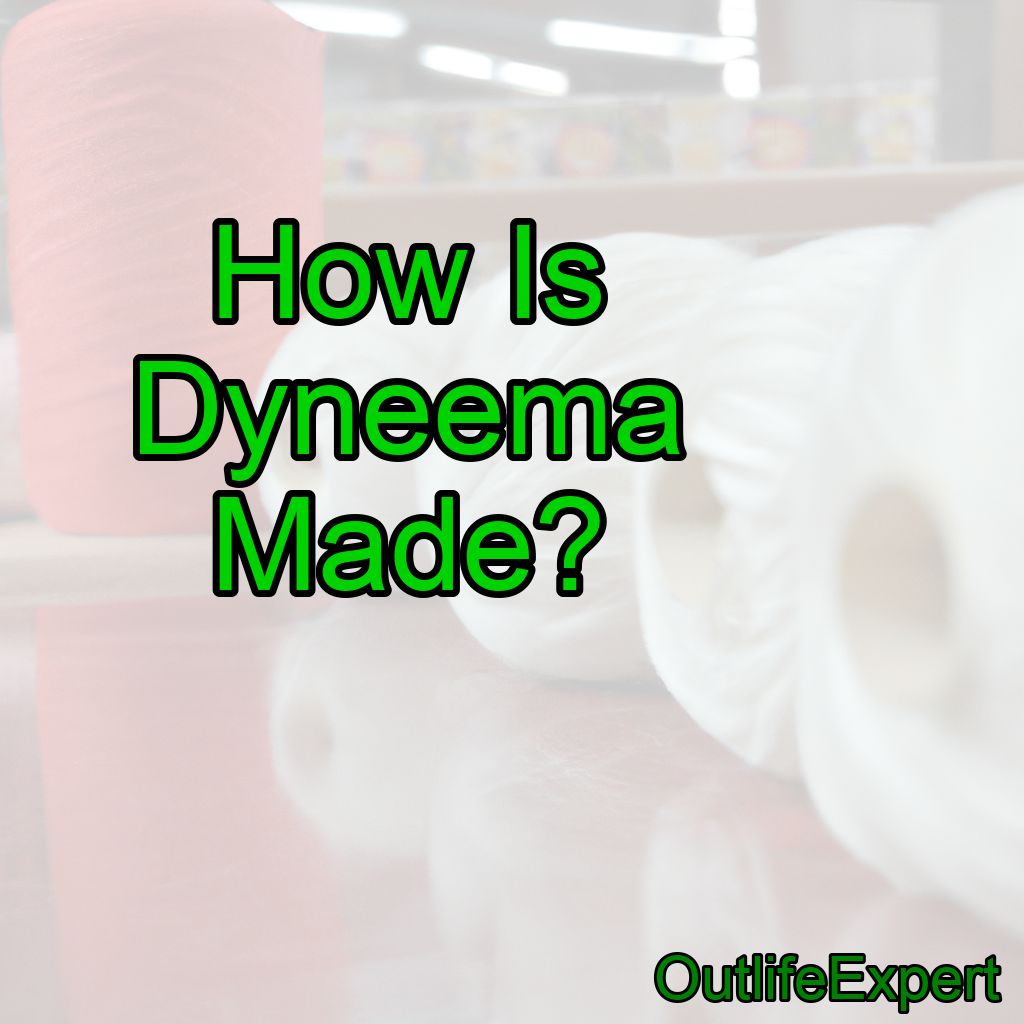How is Dyneema made?
Dyneema is a high-performance polyethylene fiber that offers maximum strength combined with minimum weight. It is up to 15 times stronger than quality steel and up to 40% stronger than aramid fibers, both on weight for weight basis. Dyneema is also known as Ultra-High Molecular Weight Polyethylene (UHMWPE) or High Modulus Polyethylene (HMPE) fiber. To understand how Dyneema is made, we need to delve into the following steps:
1. Raw Material – UHMWPE Powder
The production of Dyneema begins with the raw material, Ultra-High Molecular Weight Polyethylene (UHMWPE) powder. This powder is derived from the polymerization of ethylene, a process that yields long chains of polyethylene molecules. The UHMWPE powder has a molecular weight of approximately 5 million g/mol, contributing to the fiber’s incredible strength and durability.
2. Gel Spinning
The first step in transforming the UHMWPE powder into Dyneema fibers is gel spinning. This process involves dissolving the powder in a solvent to create a thick, viscous gel. The gel is then extruded through a spinneret, a device with small holes that shape the gel into thin filaments.
3. Solvent Removal
As the filaments emerge from the spinneret, the solvent is removed through a process called air-gap quenching. This leaves behind solidified polyethylene fibers that are still in a gel-like state.
4. Drawing
Next, the gel-like fibers are drawn, or stretched, to align the long chains of polyethylene molecules. This alignment is critical for the development of the fiber’s strength and toughness. The drawing process typically involves multiple stages, with each stage stretching the fibers to a greater degree than the previous one.
5. Heat Treatment
After drawing, the fibers undergo heat treatment, also known as annealing. This process helps to further align the polyethylene molecules and set the fiber’s final dimensions. The fibers are heated to a specific temperature and then cooled, resulting in a more crystalline structure and increased strength.
6. Twisting and Braiding
The individual Dyneema fibers are then twisted and braided to create yarns, ropes, and other products. This process enhances the material’s abrasion resistance and handling characteristics, making it suitable for a wide range of applications.
7. Coating
In some cases, Dyneema fibers may be coated with a protective layer to enhance their performance in specific applications. For example, a marine-grade coating can be applied to improve the fiber’s resistance to UV radiation and saltwater.
8. Quality Control
Throughout the production process, strict quality control measures are in place to ensure that the final Dyneema product meets the highest standards of performance and reliability. This includes testing for tensile strength, elongation, abrasion resistance, and other properties.
9. End Products
The completed Dyneema fibers can be used in a wide range of applications, from heavy-duty industrial slings to lightweight, high-strength ropes for sailing and outdoor adventure sports. The material’s unique combination of strength, lightweight, and durability make it a popular choice for numerous industries.
In conclusion, Dyneema is made through a complex process involving gel spinning, drawing, heat treatment, and other steps that lead to the creation of this incredibly strong and lightweight material. Here are ten key facts about Dyneema:
1.Dyneemais a high-performance polyethylene fiber.
2. It isup to 15 times stronger than steeland up to 40% stronger than aramid fibers on a weight-for-weight basis.
3. Dyneema is also known asUltra-High Molecular Weight Polyethylene (UHMWPE)orHigh Modulus Polyethylene (HMPE)fiber.
4. The production process begins withUHMWPE powderas the raw material.
5. The powder is dissolved and extruded through a spinneret in a process calledgel spinning.
6. After solvent removal, the fibers aredrawnto align the polyethylene molecules and increase their strength.
7.Heat treatmentfurther aligns the molecules and sets the fiber’s final dimensions.
8. The fibers may becoatedfor specific applications, such as marine environments.
9. Strictquality controlmeasures ensure the highest performance and reliability of the final product.
10. Dyneema fibers are used in a wide range of applications, fromindustrial slingstohigh-strength ropesfor sailing and outdoor adventure sports.
FAQs
How is dyneema fabric made?
Dyneema fabric is made through a process called gel spinning, in which ultra-high molecular weight polyethylene fibers are spun into a gel and then stretched to create a strong and lightweight material.
Why is Dyneema so expensive?
Dyneema is expensive due to its exceptional strength-to-weight ratio, which is higher than any other synthetic fiber. Its manufacturing process is also complex and requires specialized equipment, making it a premium material.
Is Dyneema stronger than Kevlar?
Yes, Dyneema is stronger than Kevlar.
What is the process of Dyneema?
Dyneema is a high-performance fiber made through a gel-spinning process where ultra-high molecular weight polyethylene is extruded through a spinneret at a high temperature and pressure, then cooled and stretched to align the molecular chains, resulting in a strong and lightweight material.
Which is better Dyneema or Kevlar?
It depends on the specific application. Dyneema is stronger and lighter than Kevlar, making it ideal for use in applications such as ropes and cables. Kevlar, on the other hand, is more heat-resistant and has better cut and puncture resistance, making it better suited for use in body armor and protective gear. Ultimately, the choice between Dyneema and Kevlar will depend on the specific needs and requirements of the application.
How is dyneema composite fabric made?
Dyneema composite fabric is made by combining ultra-high-molecular-weight polyethylene fibers with a thermoset resin to create a strong and lightweight material. The fibers are woven into a fabric, which is then impregnated with the resin and cured under heat and pressure to create a rigid composite.




